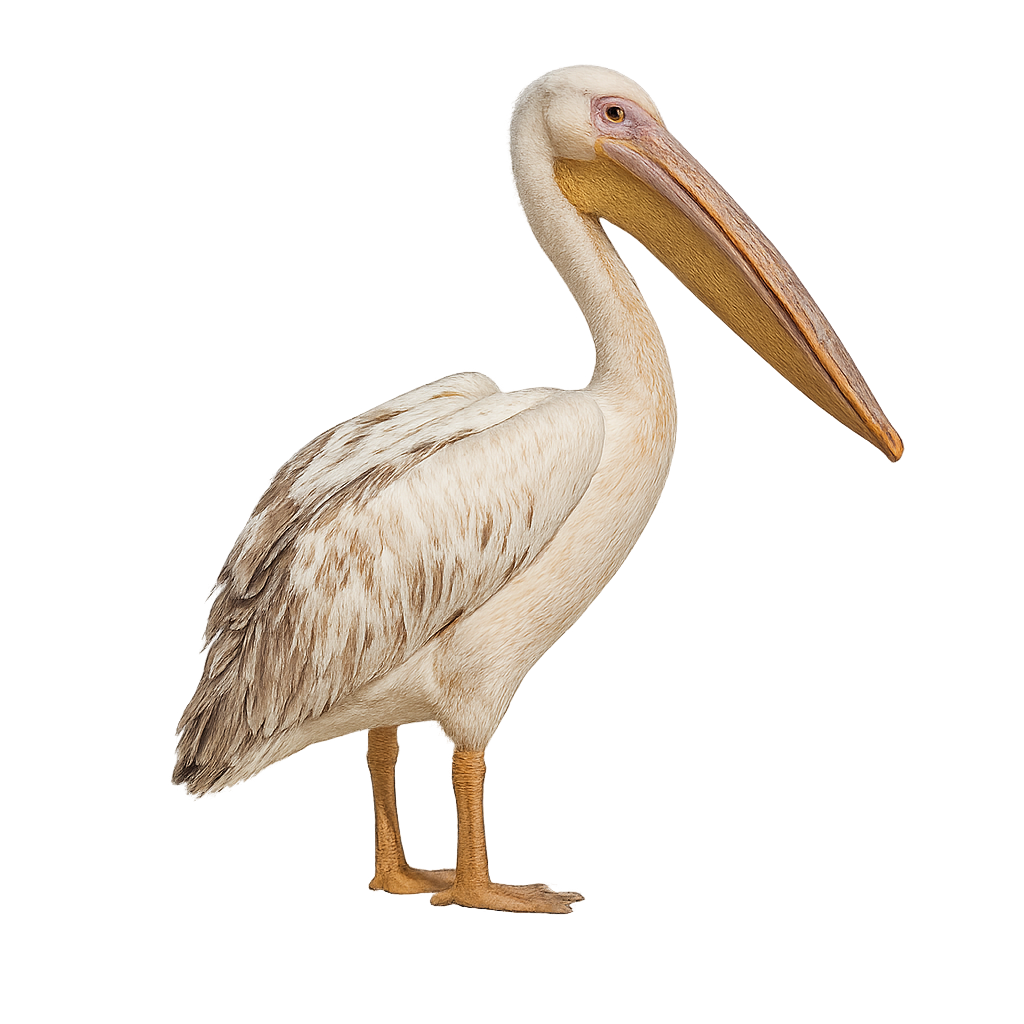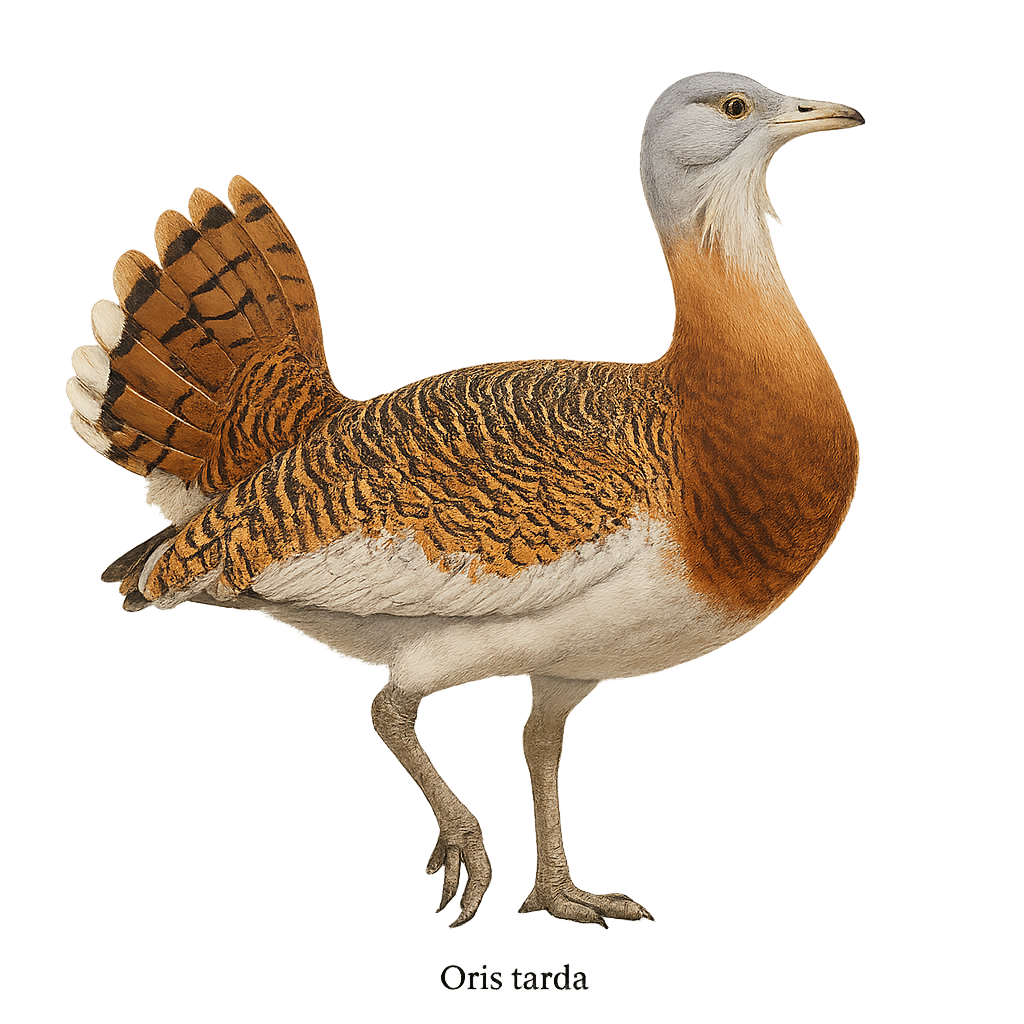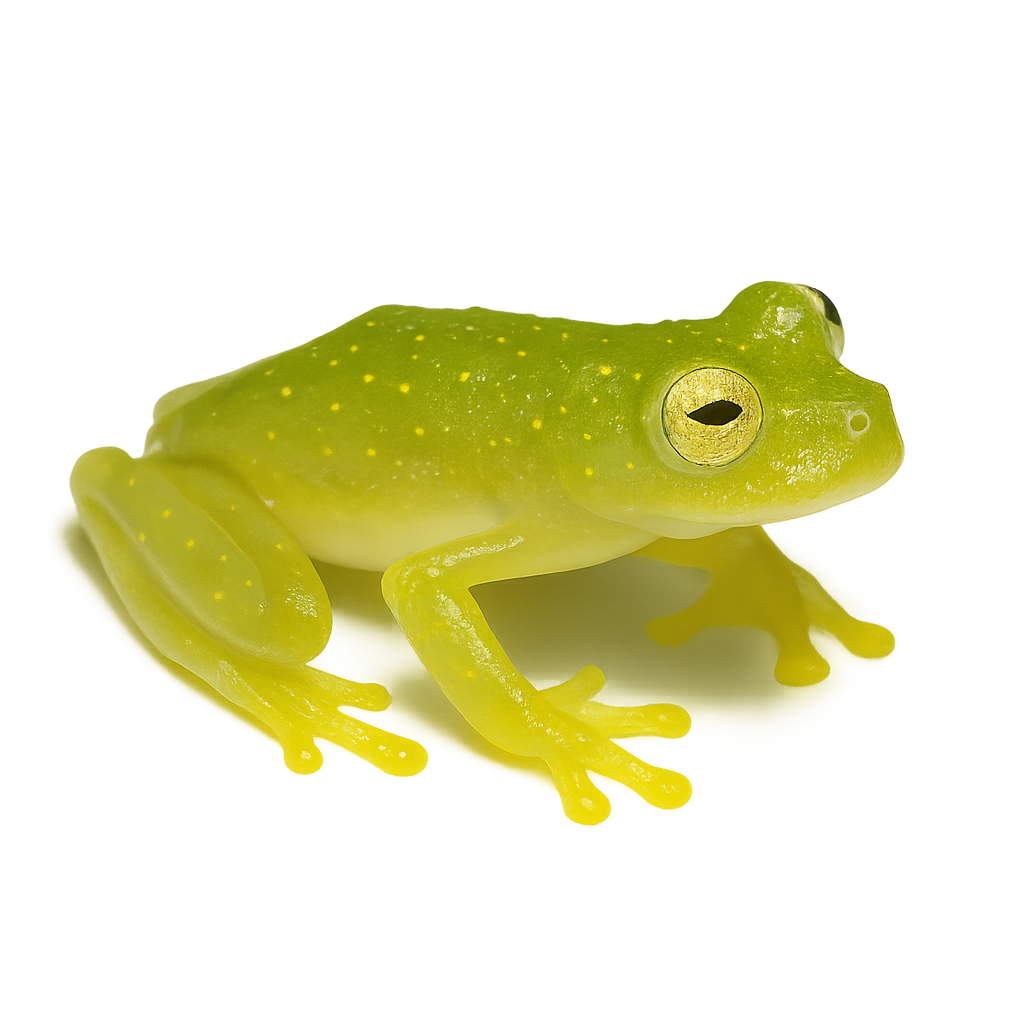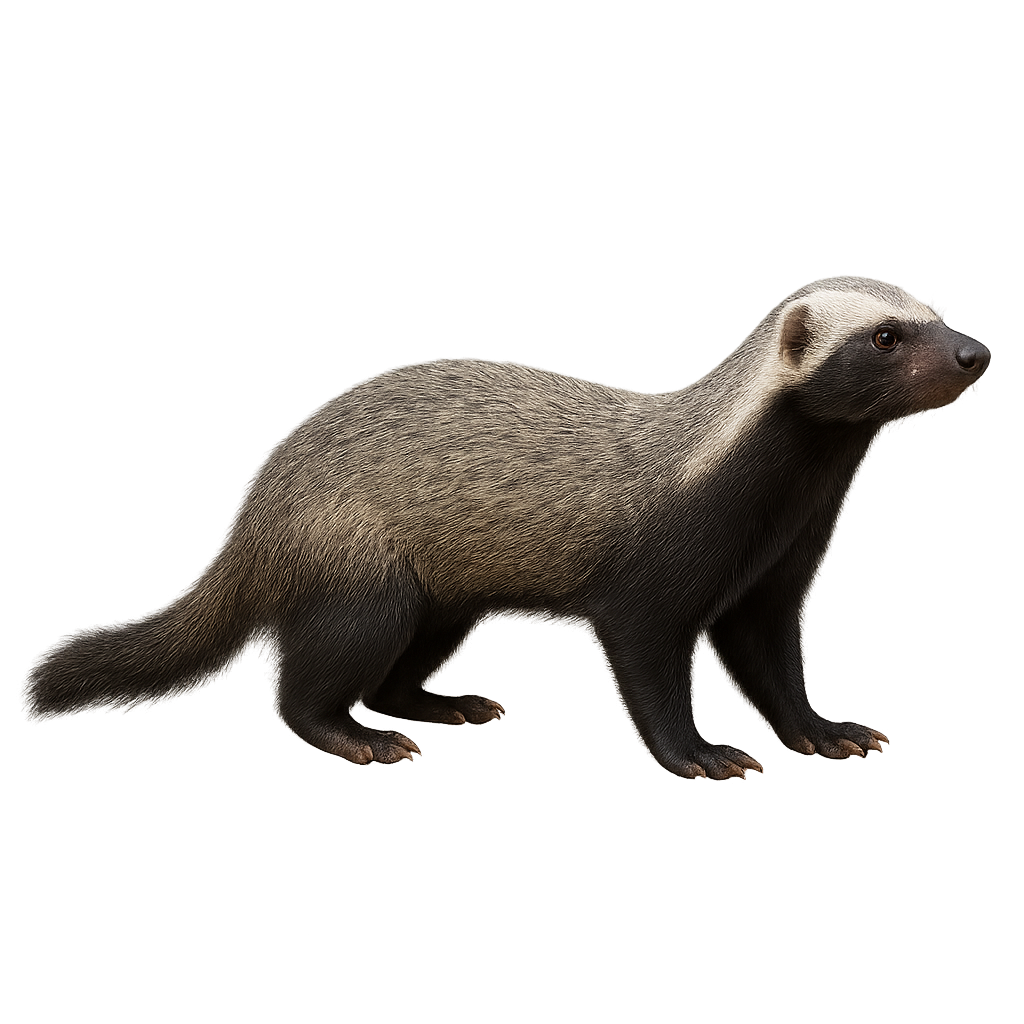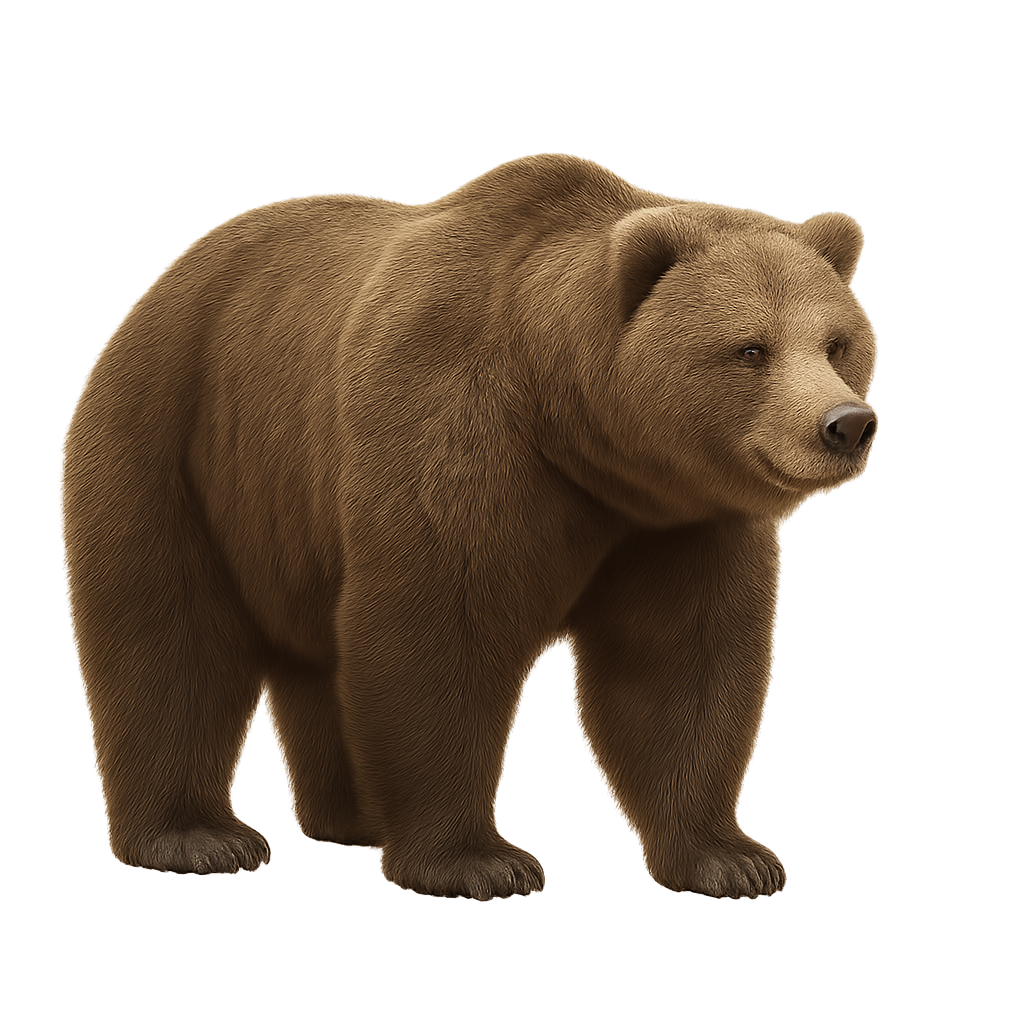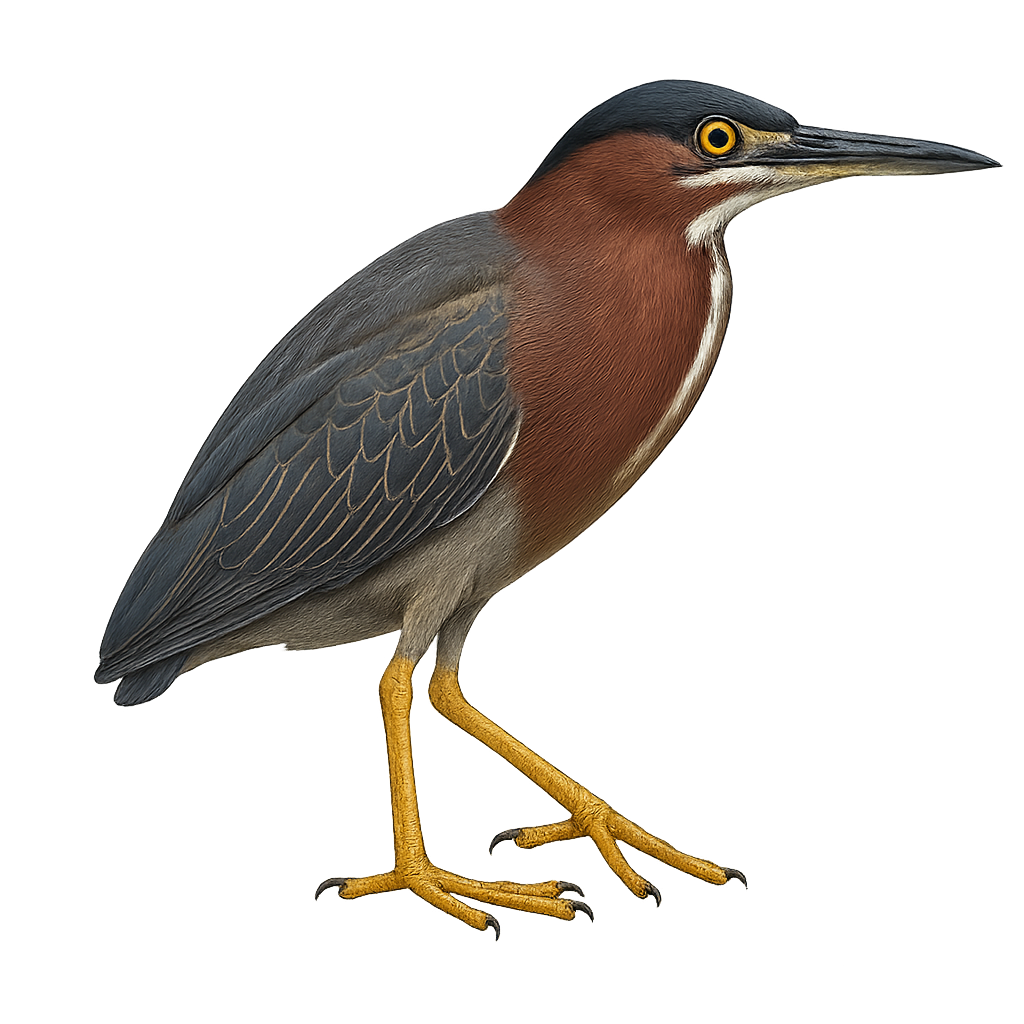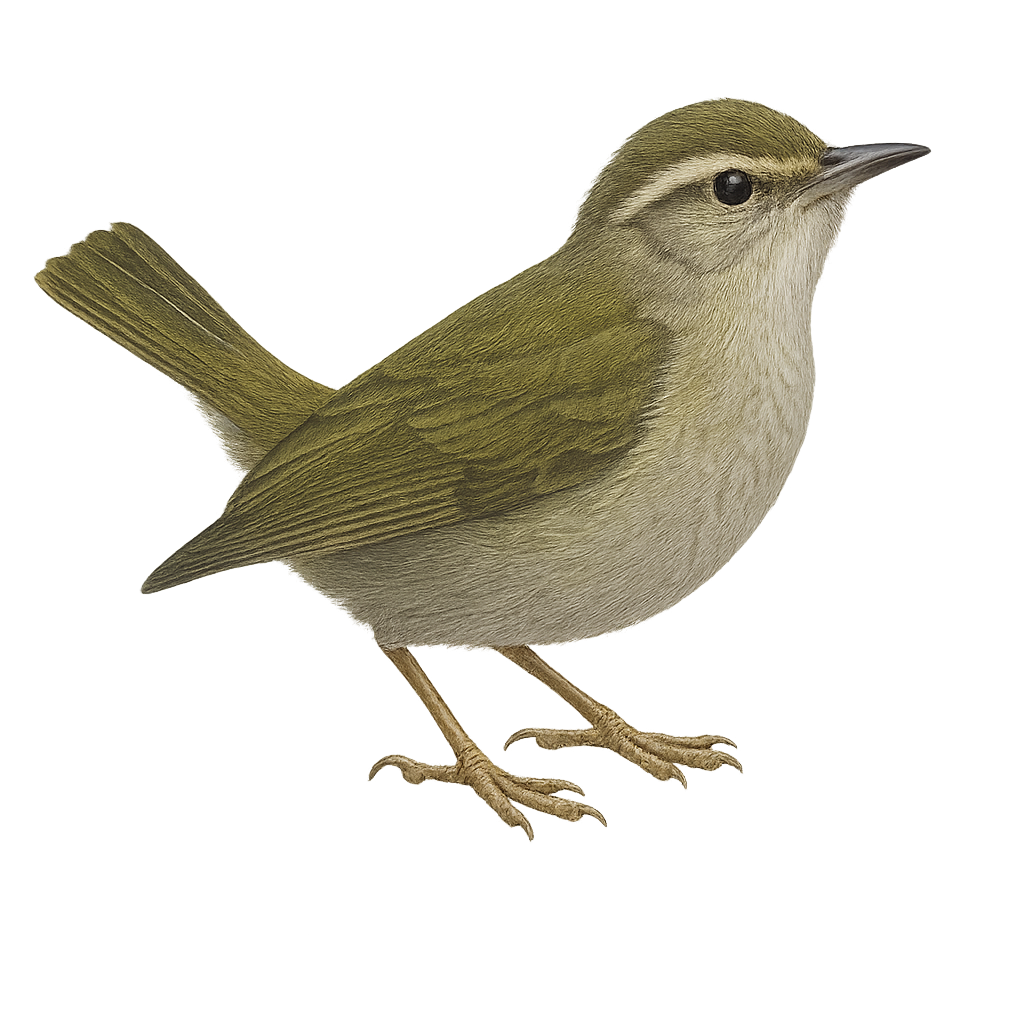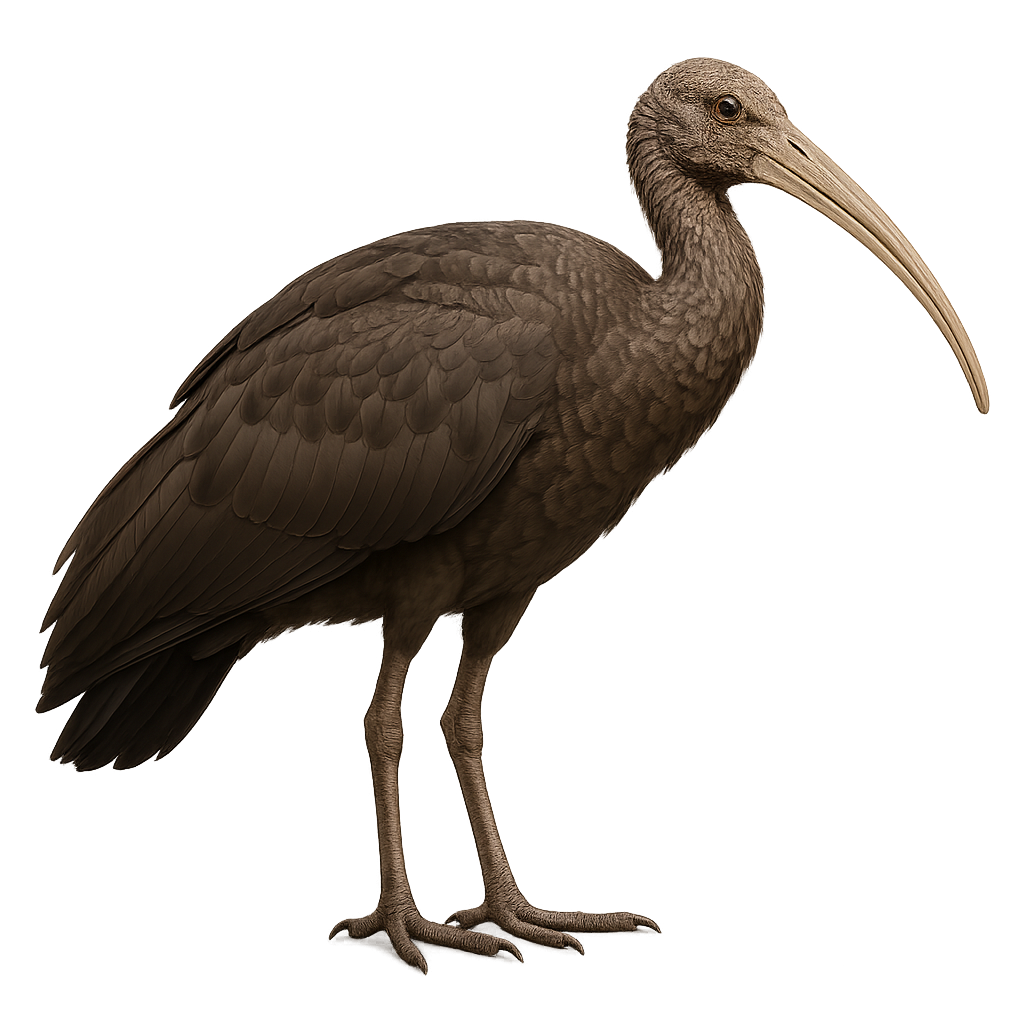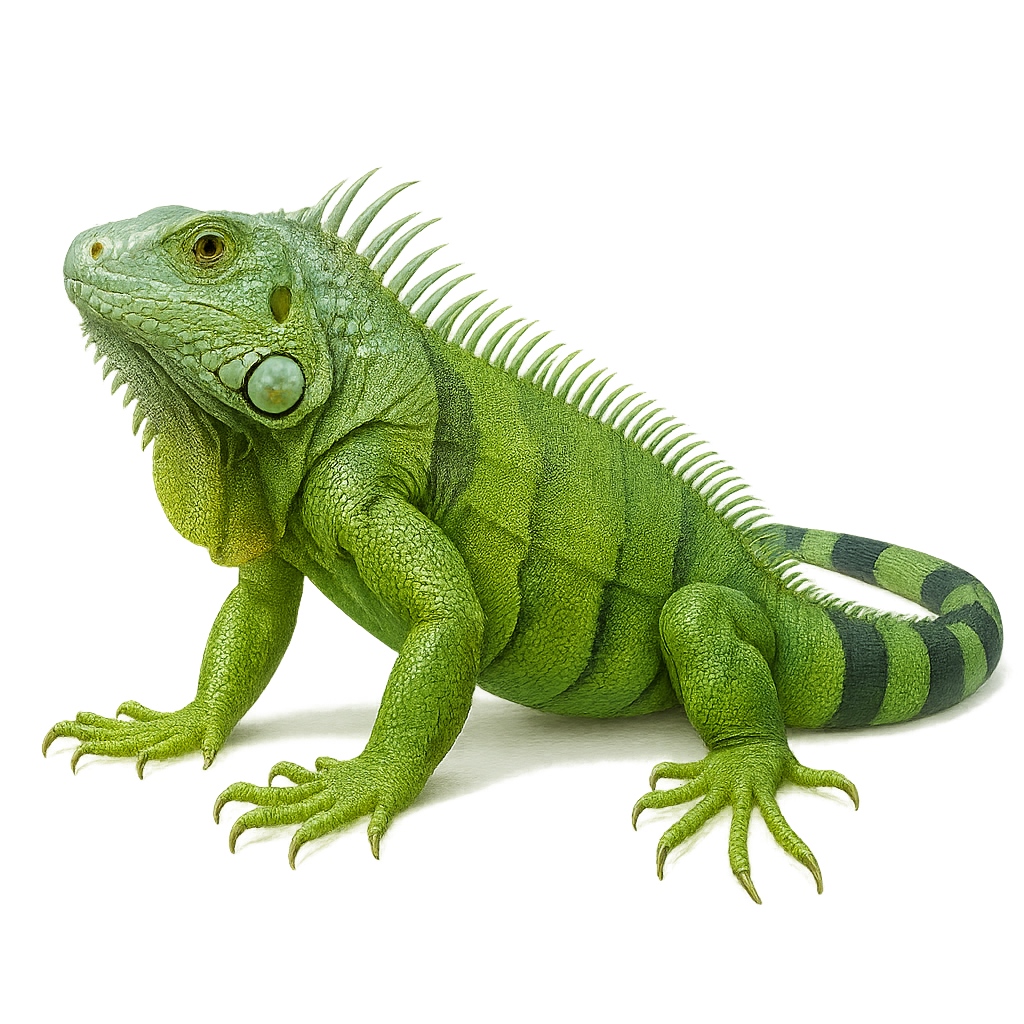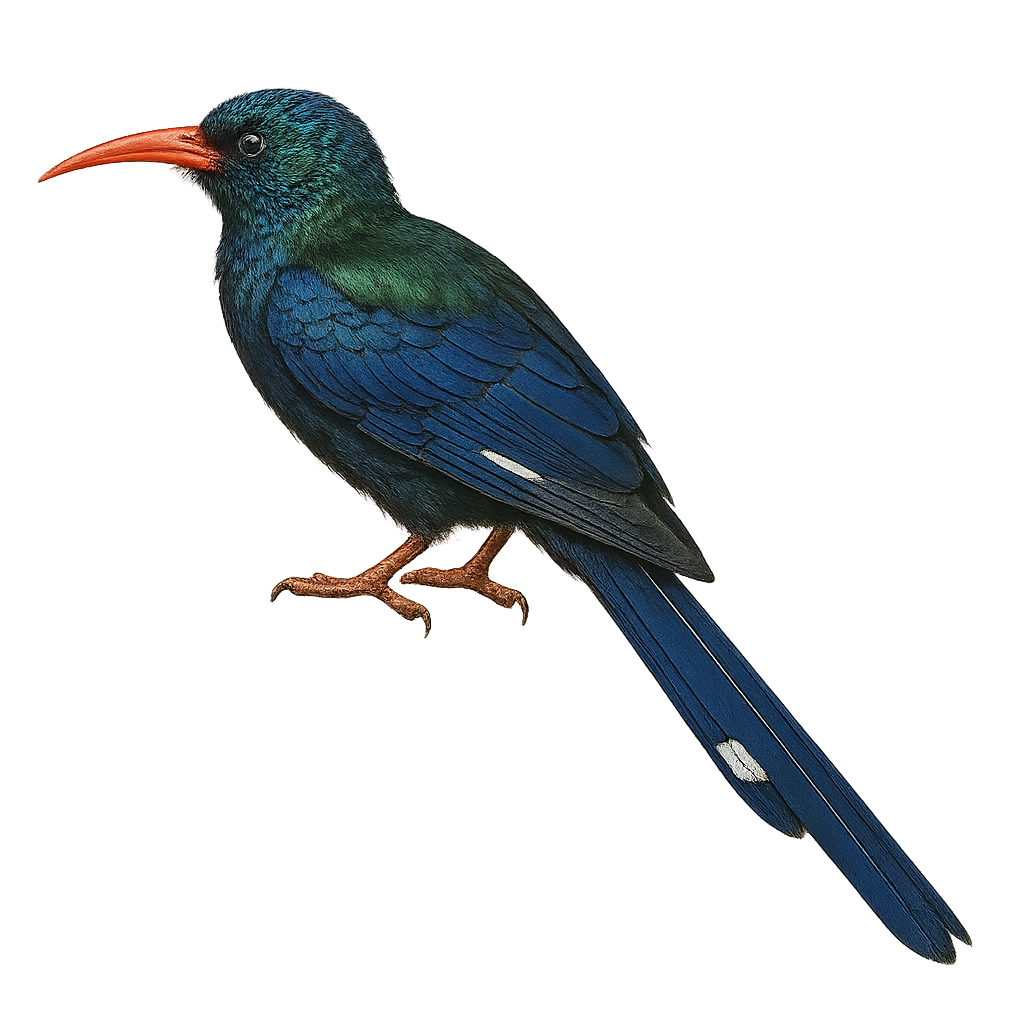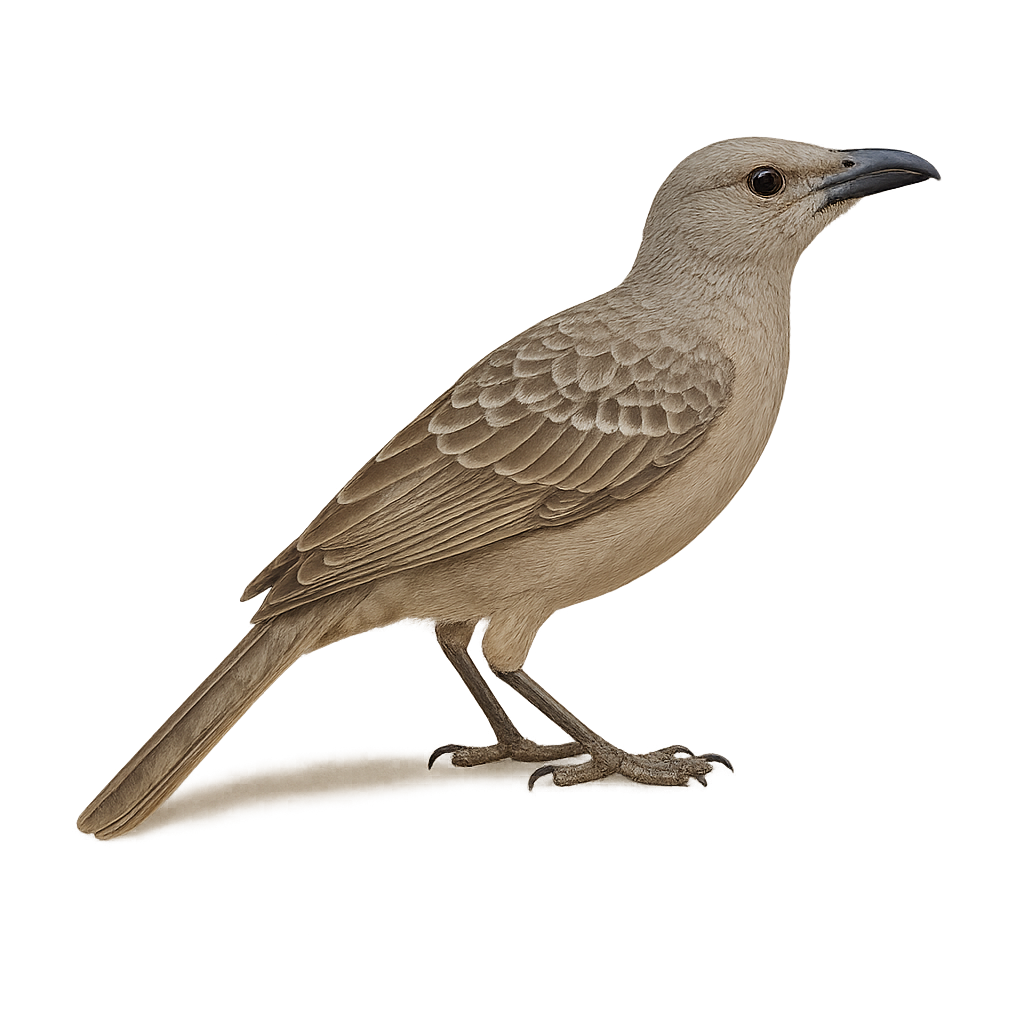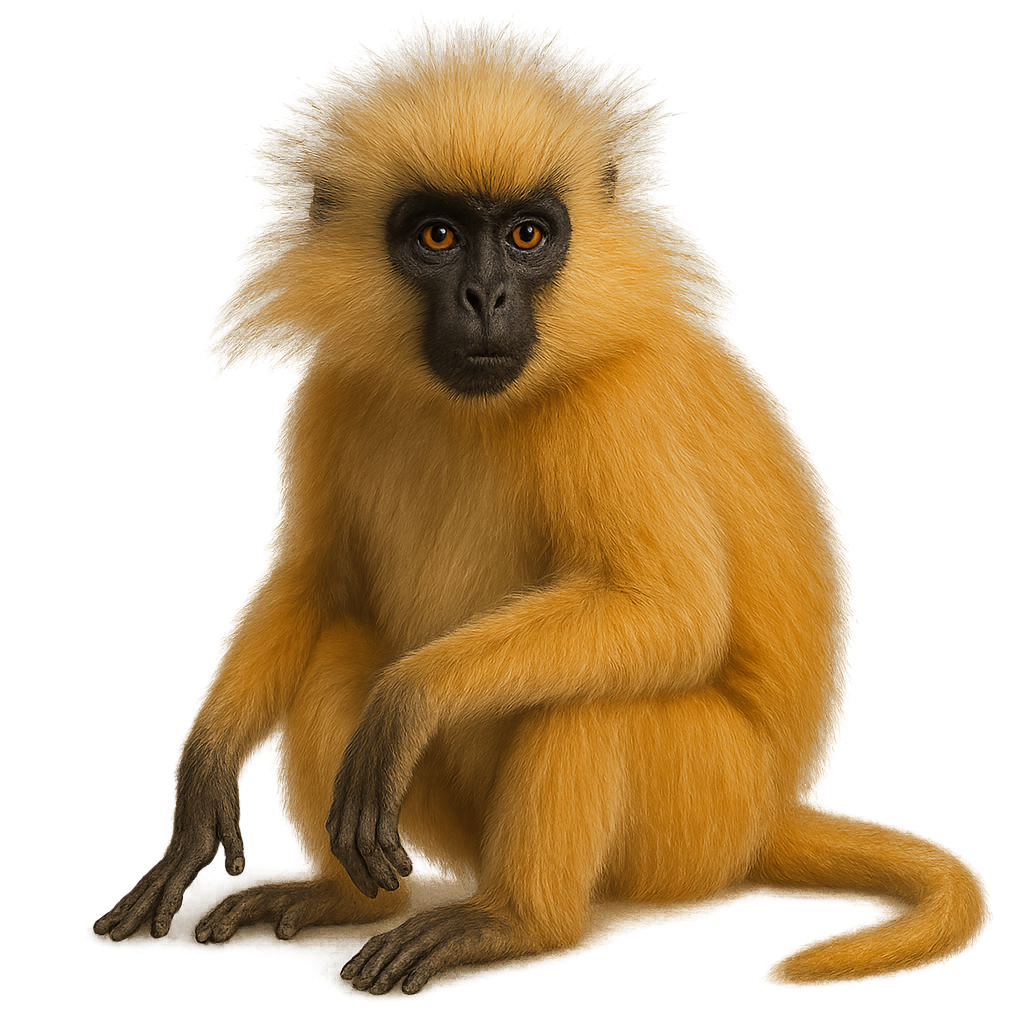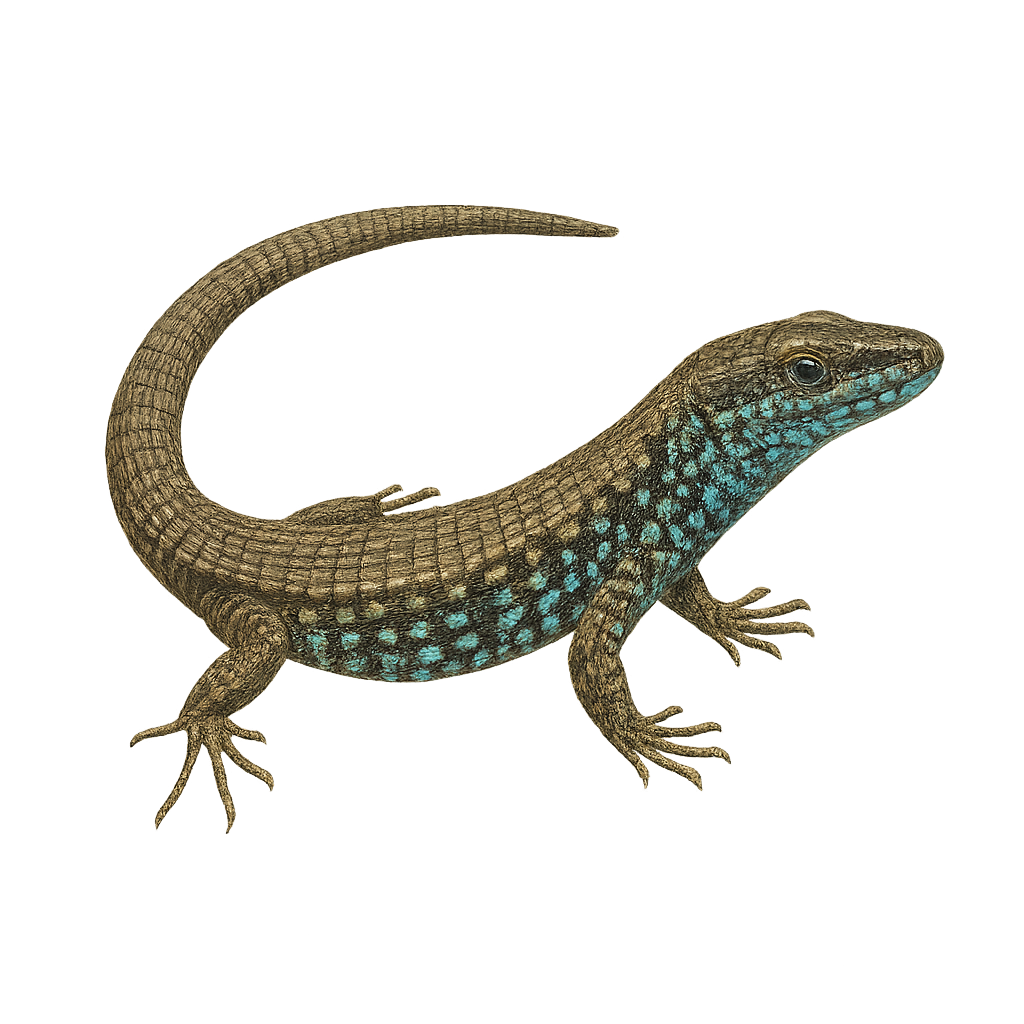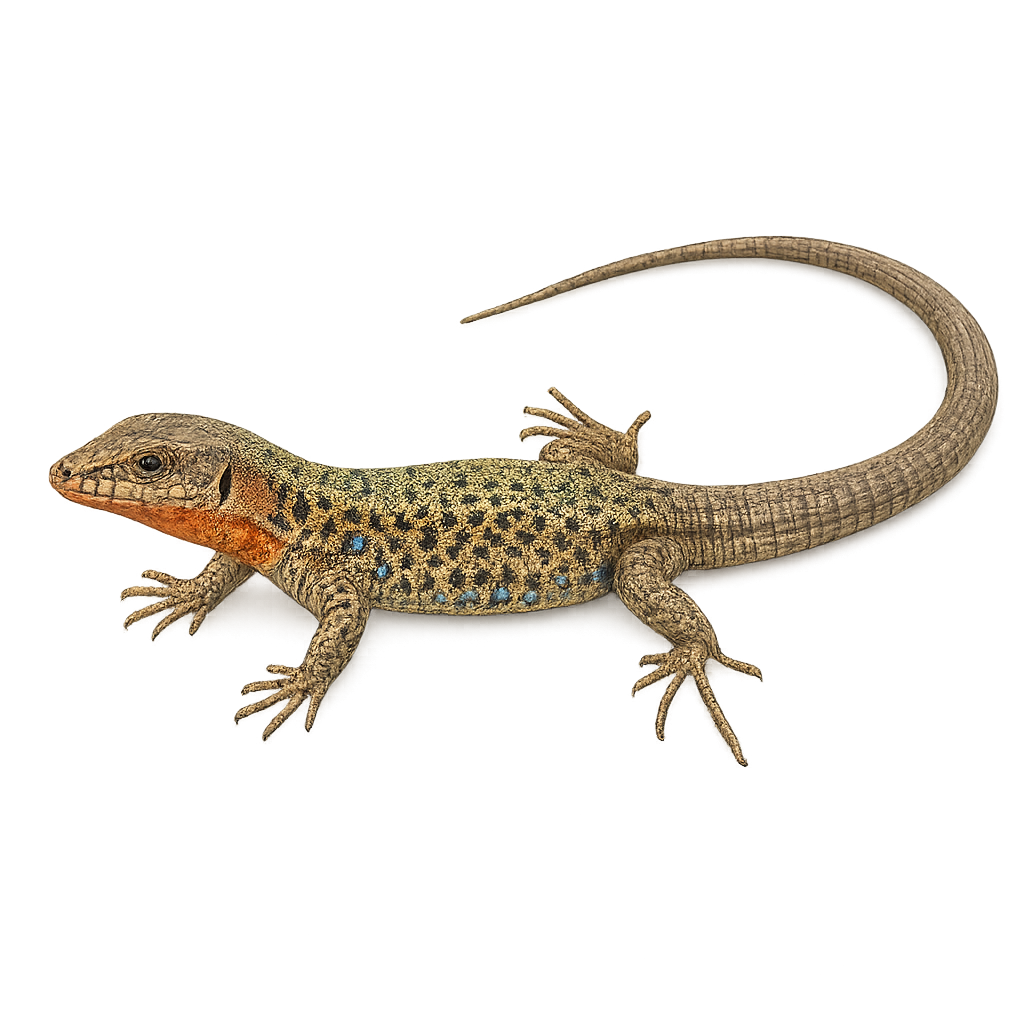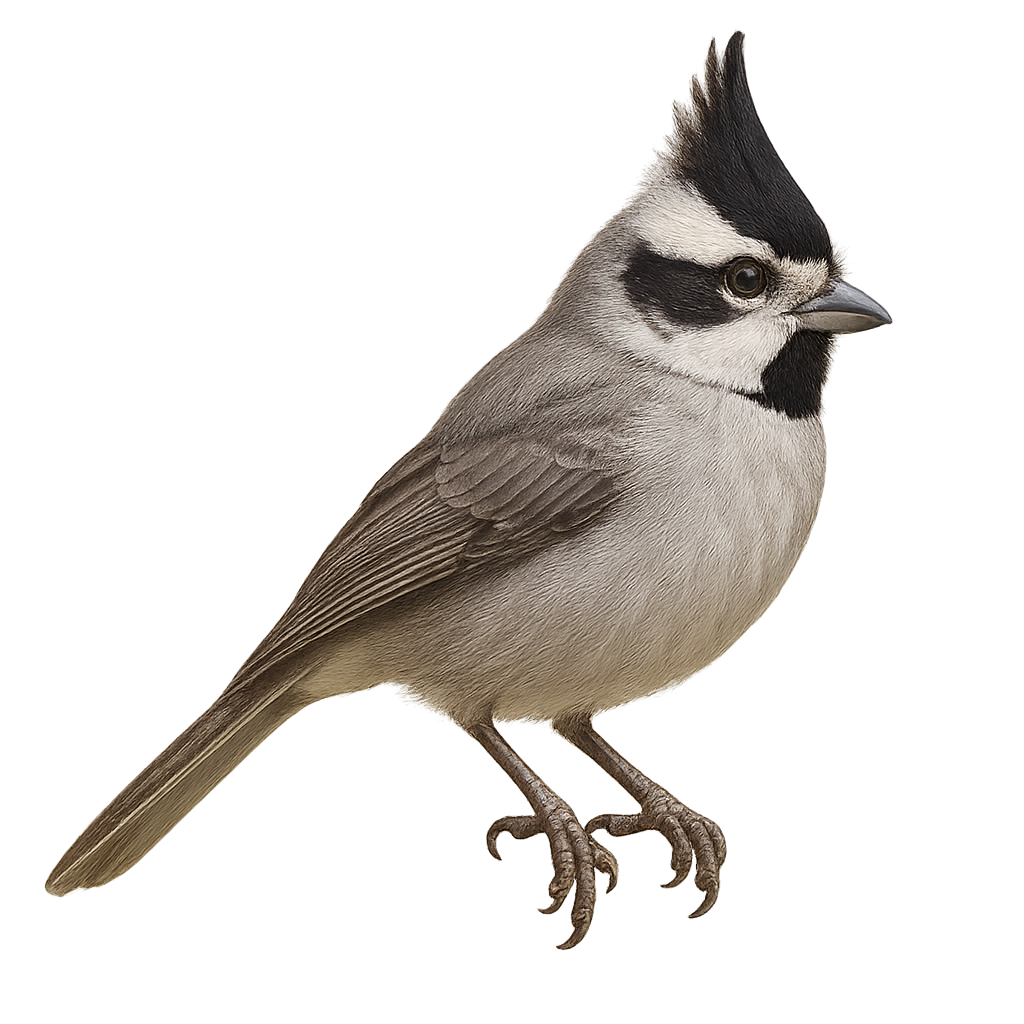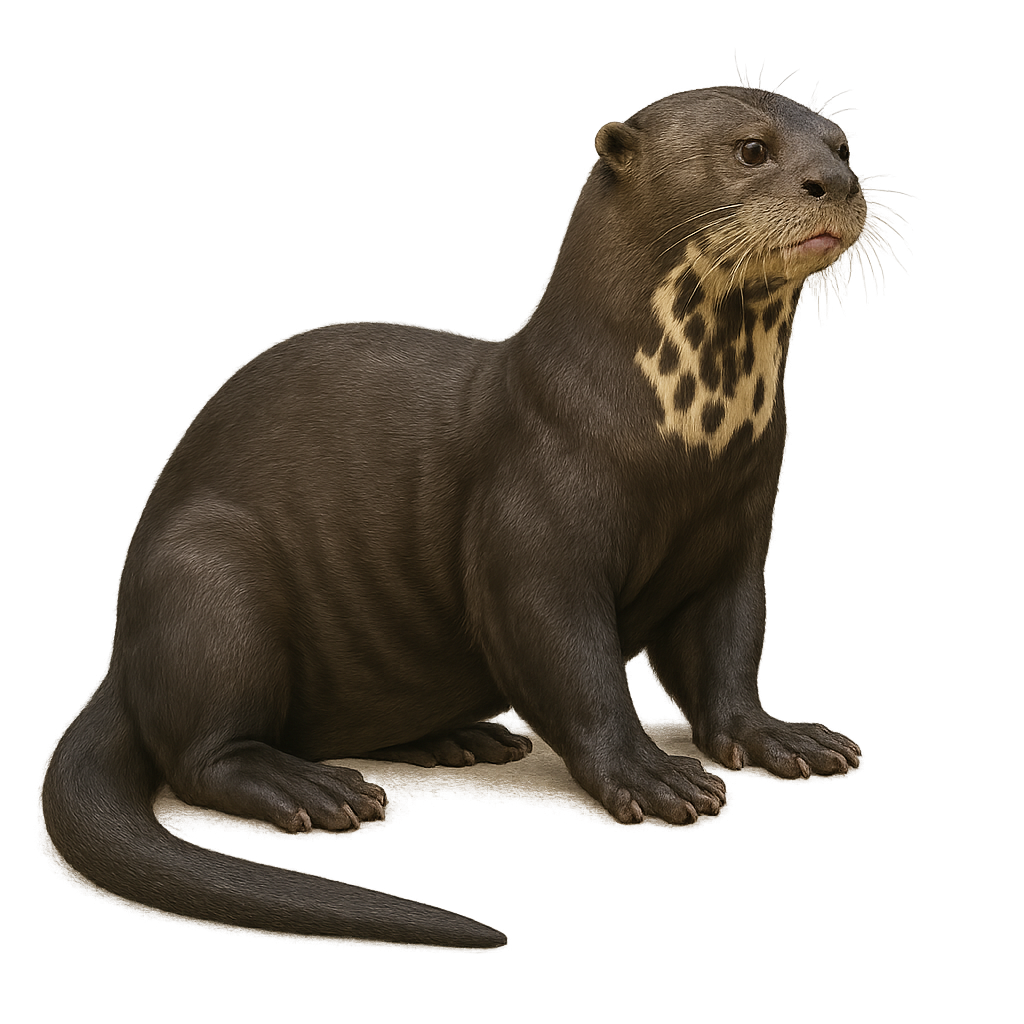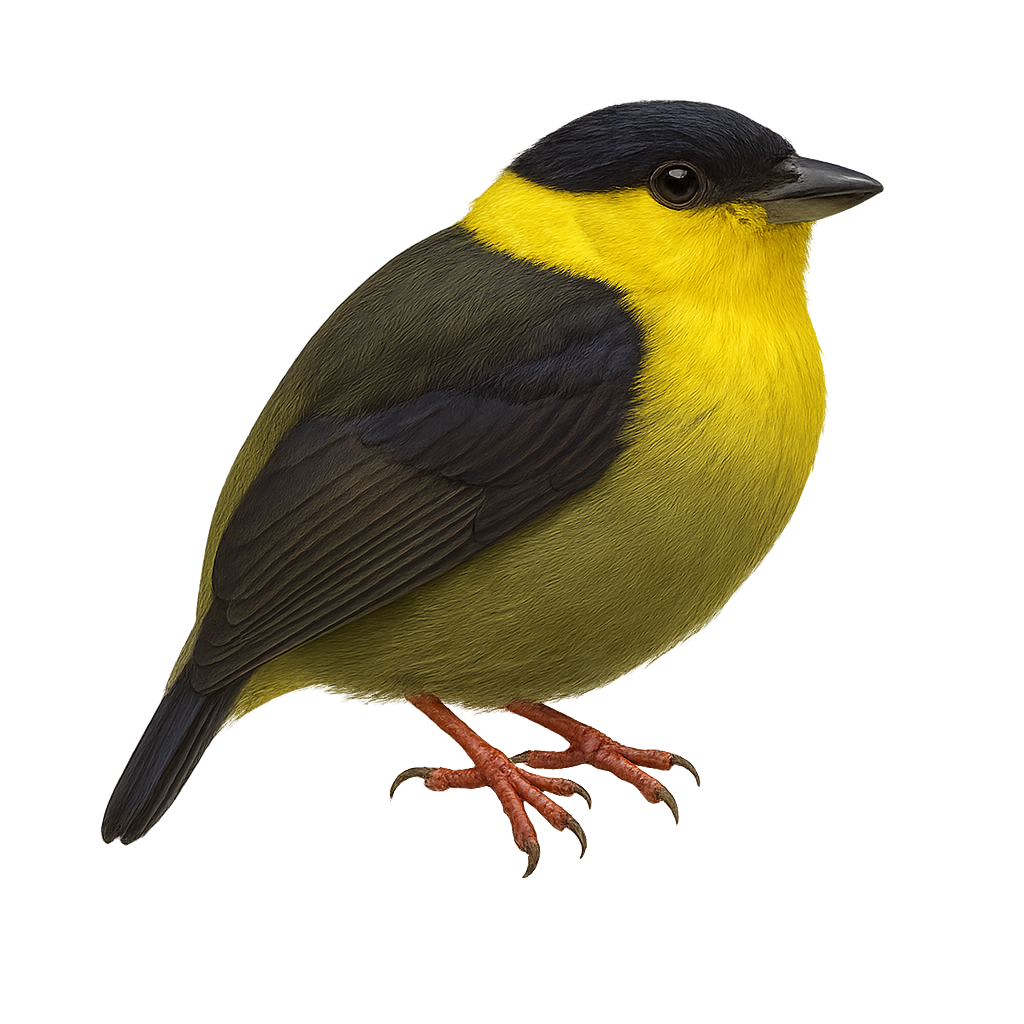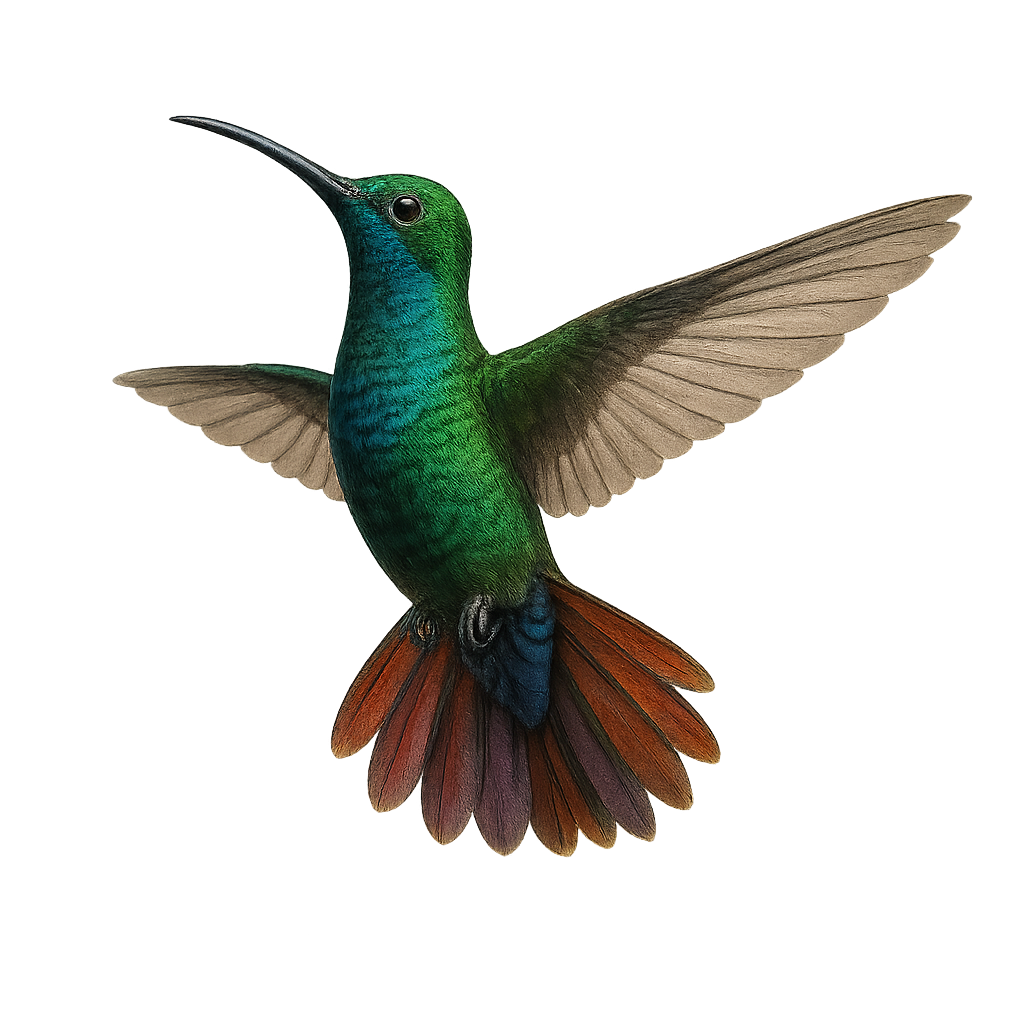The greater mouse-eared bat is a medium-sized bat, 7–9 cm in body length, with a 35–43 cm wingspan and weighing 20–40 g. Uniform grey-brown fur, long rounded ears. A cave-dwelling species, forages on the ground and in low flight for beetles and other invertebrates.
The Great White Pelican, or Pelecanus onocrotalus, is a large aquatic bird easily recognizable by its bright white plumage and long, voluminous bill with an expandable pouch. It primarily inhabits freshwater lakes and marshes, but can also be found in estuaries and coastal lagoons. This gregarious bird is often seen in large groups, flying in formation or resting on shores. It feeds mainly on fish, which it catches by dipping its bill into the water. Its collective fishing technique is fascinating, as several individuals form a circle to trap fish. The Great White Pelican is a symbol of cooperation and harmony in nature.
The Giant Anteater, also known as the Myrmecophaga tridactyla, is a large insectivorous mammal primarily found in the tropical forests and savannas of South America, notably in Brazil, Guyana, Argentina, and Venezuela. It measures between 1.7 and 2.2 meters in length, with a tail of 60 to 90 cm, and weighs between 25 and 40 kg. Its fur is generally light gray or brown, and it has a long cylindrical snout, as well as an extremely long tongue that can reach up to 60 cm in length, which it uses to catch ants and termites. The Giant Anteater is a nocturnal animal, primarily feeding on ants, termites, and other insects found in nests. While it is an excellent digger and climber, it is threatened by habitat loss and illegal hunting.
The Great Horned Owl is a large nocturnal raptor, one of the most imposing owls on the American continent. It measures between 50 and 70 cm in length, with a wingspan of 1.2 to 1.5 meters, and weighs between 1.5 and 2.5 kg. Its plumage is mainly brown, speckled with black, with lighter markings on its belly and wings. It has large tufts of feathers on its head that resemble ears, and piercing yellow eyes. This owl inhabits a variety of habitats, including forests, wooded areas, and open landscapes across North America, notably in the United States, Canada, and Central America. It is primarily nocturnal and carnivorous, feeding on small mammals, birds, and occasionally reptiles. It is also known for its impressive hunting abilities, flying silently to surprise its prey. Although the Great Horned Owl is not currently threatened, it may be affected by habitat loss and human disturbance.
The Great Egret is a large wading bird, easily recognizable by its entirely white plumage, long legs, and long, sinuous neck. It stands about 85 to 105 cm tall, with a wingspan of 1.3 to 1.7 meters, and weighs between 800 and 1,500 g. The Great Egret has a long, slender yellow beak and bright green eyes. It primarily inhabits wetlands, marshes, estuaries, and lake shores in Europe, Africa, Asia, and the Americas. This bird is an excellent fisherman, feeding mainly on fish, crustaceans, and aquatic insects, which it captures by diving or slowly probing the water with its beak. During the breeding season, the Great Egret is known for its elegant courtship dances and its plumage adorned with long, delicate feathers, giving it a majestic appearance. While the species is not endangered, it is sometimes threatened by habitat loss and water pollution.
The great bustard, Otis tarda, is one of the heaviest flying birds. It is recognizable by its brown and white plumage, with distinctive patterns on the wings. Males, larger than females, sport a white feather mustache during the breeding season. This bird prefers vast open plains and steppes, where it feeds on plants, insects, and small vertebrates. The great bustard is a symbol of bird conservation in Europe, as it is threatened by habitat loss and hunting. It is known for its spectacular courtship displays, where males puff up their feathers to impress females.
The Great Crested Grebe is the largest of the European grebes, measuring between 46 and 51 cm in length with a wingspan of 85 to 90 cm. In breeding plumage, it has a black crest, a reddish collar, and a long, pointed bill. In non-breeding plumage, it is more subdued, with a dark back and a light belly. It inhabits shallow lakes, ponds, and marshes, often surrounded by aquatic vegetation. It primarily feeds on fish, aquatic insects, and small crustaceans. Reproduction occurs in spring and summer, with a clutch of 3 to 6 eggs laid in a floating nest. The young, with black and white striped plumage, are often carried on the parents' backs. A partial migrant, it winters in the Mediterranean and warmer regions. Listed as Least Concern by the IUCN.
The Granular Poison Frog, Oophaga granulifera, is a brightly colored and toxic frog species native to the humid tropical forests of Costa Rica and Panama. It is easily recognizable by its vivid, granular skin, typically bright red with black spots. This coloration serves as a warning to potential predators of its toxicity. Measuring about 2 to 3 centimeters, this frog is a fascinating example of aposematic mimicry. It primarily feeds on small insects and arthropods found in the leaf litter. The Granular Poison Frog plays a crucial role in its ecosystem by controlling insect populations and serving as prey for certain predators resistant to its poison.
The Cochranella Frog is a fascinating amphibian species, known for its translucent skin that allows its internal organs to be visible. Unlike other glass frogs, its skin is slightly granular, which helps it camouflage better in the dense vegetation of its habitat. This frog lives in the humid tropical forests of Central America, mainly in Costa Rica and Panama, where it is found on leaves hanging above streams. Its small size, combined with its discreet behavior, makes it hard to spot. The eggs are laid on leaves above the water, and the tadpoles fall into the stream as they hatch. These frogs are primarily nocturnal and prefer to avoid human interaction.
The Glass Frog is a fascinating species of amphibian, known for its translucent skin that allows its internal organs to be visible. It typically measures between 2 and 3 cm long and is commonly found on leaves hanging above streams in the tropical rainforests of Central and South America. Its transparent skin serves as an excellent camouflage, helping it blend seamlessly into its environment. This frog’s ability to blend with the vegetation, combined with its small size, makes it hard to spot. Its eggs are laid on leaves above water, and the tadpoles fall into the water once they hatch. This species is nocturnal and somewhat shy, preferring to avoid human interaction.
The Goliath frog is the largest amphibian in the world, capable of measuring up to 32 cm in length and weighing over 3 kg. Native to the rivers and swamps of Cameroon and Gabon, it primarily feeds on insects, fish, and occasionally small mammals. Its large size and rough green skin make it a formidable predator, but it remains discreet and prefers to stay submerged in water. Although not critically endangered, the Goliath frog faces pressures due to habitat destruction.
The Greater Grison is a small carnivorous mammal from the Mustelidae family, found mainly in Central and South America. It has an elongated body, narrow head, and short legs. Its fur is characterized by a grayish color on the back and black on the belly, with a distinct white stripe running from the head to the base of the tail. This agile predator primarily feeds on small mammals, birds, and reptiles. It is often seen in tropical forests, savannas, and wetlands. Although mainly nocturnal, it can sometimes be active during the day.
The Grizzly Bear is a subspecies of the brown bear, imposing and robust, often considered one of the most powerful land predators in North America. It measures between 2 and 3 meters in length, with a shoulder height ranging from 1 to 1.5 meters, and weighs between 200 and 680 kg, with males generally being larger than females. Its fur is dense and can range from light to dark brown, sometimes with silver hues that give it a grizzled appearance. The Grizzly primarily inhabits forests, mountains, and prairie areas in North America, notably in Alaska, Canada, the Rocky Mountains, and U.S. national parks like Yellowstone. Omnivorous, it primarily feeds on berries, roots, fish, but also small mammals and sometimes animal carcasses. While feared due to its size and strength, the Grizzly is a shy animal and prefers to avoid human contact. The species is protected in many regions, although its population is still threatened by habitat loss, illegal hunting, and conflicts with humans.
The Grey Heron is a large wading bird, easily recognizable by its slender silhouette, long neck, and large legs. It stands about 90 cm tall, with a wingspan of 1.5 to 1.9 meters, and weighs between 1.5 and 2 kg. Its plumage is primarily gray, with white markings on the belly and underside of the wings, and a white head adorned with distinctive black feathers. It has a long, pointed yellow beak, adapted for capturing its prey, primarily fish, amphibians, insects, and occasionally small mammals. The Grey Heron inhabits wetlands, marshes, rivers, and lakes across Europe, Asia, and North Africa. It is an excellent hunter, patiently waiting by the water's edge to capture its prey with its beak. Although the species is not endangered, it can be vulnerable to water pollution, habitat loss, and human disturbance.
The Green Heron, Butorides virescens, is a small heron with dark green plumage and bluish-gray wings. It is characterized by its dark head and long, pointed bill. This heron is often found in wetlands, marshes, and along the shores of water bodies in North and Central America. Known for its clever hunting technique, it uses bait to lure fish. The Green Heron is a solitary bird but can be seen in small groups during migration. It is generally discreet and blends well into its environment. Its breeding season extends from spring to summer, where it builds its nest in trees or shrubs near water.
The Great curassow is a large bird of the Cracidae family, easily recognizable by its impressive plumage and crest on its head. It measures approximately 75 to 90 cm in length, with a wingspan of 1.2 to 1.4 meters, and weighs between 2 and 3 kg. Its plumage is mainly brown, with lighter feathers on the belly and distinctive markings on the wings and back. Its head is adorned with a reddish crest, giving it a distinctive appearance. The stone-curling quail mainly lives in the tropical and subtropical forests of Venezuela, Colombia, and Panama. It is often found in mountainous regions, where it frequents wooded areas and rocky slopes. The Stone-curlew is mainly herbivorous, feeding on fruits, seeds, and leaves. It is a terrestrial bird, preferring to move around by walking rather than flying. Although the species is not critically endangered, it is vulnerable to deforestation and loss of its natural habitat.
The Green Hylia is a small passerine bird found primarily in sub-Saharan Africa. It is recognizable by its olive-green plumage on the back and lighter underparts, with a slightly darker head. Its modest size and slender, pointed beak are adapted to its mainly insectivorous diet, although it also consumes fruits. It primarily inhabits tropical rainforests, forest edges, and wooded areas. Its song is a melodious trill that often resonates in its natural habitat. Although discreet, it is quite active, moving quickly through foliage in search of food.
The Giant Ibis, or Pseudibis gigantea, is a rare and majestic bird species primarily found in the dry forests and wetlands of Cambodia, Laos, and Vietnam. This impressive bird stands out due to its imposing size, reaching up to 106 cm in height, and its gray-brown plumage with metallic sheen. Its long, curved beak allows it to probe the mud in search of food, mainly consisting of insects, small reptiles, and amphibians. Unfortunately, the Giant Ibis is critically endangered, mainly due to habitat loss and hunting. Conservation efforts are underway to protect this iconic species and preserve its environment.
Native to the Galápagos Islands, the Galápagos land iguana is a unique species of iguana known for its large size and varying color from yellow to red. It primarily feeds on cactus, flowers, and succulents. The Galápagos land iguana is well adapted to its arid environment and is often seen basking in the sun. While relatively peaceful, this species is threatened by introduced predators and habitat loss.
The Green Iguana is a large herbivorous reptile, easily recognizable by its long and sturdy body, as well as its bright green coloration. It measures between 1.5 and 2 meters in length, including its tail, and can weigh between 4 and 5 kg. Its body is covered with large scales and plates, and it has a crest running down its back. Its vibrant green color, especially in young individuals, becomes duller with age. The Green Iguana primarily inhabits tropical forests, mangroves, and wooded areas in Central and South America, as well as parts of the Caribbean. This reptile is primarily herbivorous, feeding on leaves, fruits, flowers, and sometimes young shoots. The Green Iguana is an excellent climber and spends much of its time in trees or resting on branches. While it is a widespread species, it is threatened by deforestation, illegal collection for the wildlife trade, and habitat loss.
The Green Woodhoopoe, Phoeniculus purpureus, is a striking bird with metallic green plumage that shimmers with purple and blue hues. It has a long, curved bill perfect for probing tree bark for insects. This social bird lives in family groups of up to a dozen individuals and is found mainly in the wooded savannas and open forests of sub-Saharan Africa. Its call is a series of rhythmic, repeated cries often likened to laughter. The Green Woodhoopoe is diurnal, active mainly in the morning and late afternoon. Although not currently threatened, deforestation poses a potential risk to its natural habitat.
The Great Bowerbird, Chlamydera nuchalis, is a fascinating bird native to Australia, renowned for its unique courtship behavior. Males build elaborate bowers decorated with colorful objects to attract females. Their plumage is primarily gray-brown with a distinctive pink patch on the nape. These birds are mainly frugivorous but also consume insects and other small animals. They inhabit various environments, including open forests, savannas, and woodlands. Their song is varied and often mimics environmental sounds. Although their population is stable, deforestation poses a potential threat.
The Trachypithecus geei, or Gee's golden langur, is a rare and fascinating primate endemic to the border region between Bhutan and India. It is distinguished by its striking golden fur, giving it a unique and majestic appearance. This arboreal monkey primarily inhabits tropical and subtropical forests, where it feeds on leaves, fruits, and flowers. Golden langurs are social animals, living in family groups led by a dominant male. Unfortunately, this species is threatened by deforestation and habitat fragmentation, leading to a decline in its population. Conservation efforts are underway to protect this iconic animal and its natural environment.
The Greek Algyroides, Algyroides moreoticus, is a small reptile endemic to the Balkan Peninsula, mainly found in Greece. It is characterized by its modest size, usually reaching 10 to 15 cm in total length, including the tail. Its coloration ranges from brown to olive green, with lighter patterns on its back and sides. This lizard is often seen in rocky areas, sparse forests, and Mediterranean scrublands. It is diurnal and primarily feeds on insects and other small invertebrates. Although relatively discreet, it can be seen basking in the sun on rocks or tree trunks. Its population is stable, but it is sensitive to disturbances in its natural habitat.
The Greek Rock Lizard, Lacerta graeca, is a species endemic to the Balkan Peninsula, mainly found in Greece. It is characterized by its bright green coloration with black patterns on its back, allowing it to blend effectively into its natural habitat. This lizard prefers rocky areas and open meadows, where it can bask in the sun. It is diurnal and primarily feeds on insects and other small invertebrates. Although relatively tolerant of human presence, it remains cautious and quick to hide when threatened. Its breeding season extends from spring to summer, with a gestation period of about two months.
The Grey-hooded Sierra Finch, or Lophospingus pusillus, is a small passerine bird belonging to the Thraupidae family. It is primarily found in the arid and semi-arid regions of South America, particularly in Argentina, Bolivia, and Paraguay. This bird is distinguished by its characteristic grey crest and brownish plumage. It measures about 14 cm in length and feeds mainly on seeds and insects. The Grey-hooded Sierra Finch is often seen in small groups, moving around in search of food. Although relatively discreet, its melodious song can be heard from a distance. The species is currently classified as of least concern by the IUCN but remains sensitive to environmental changes.
The Gray Wolf is a large carnivore, often considered the ancestor of all modern subspecies of wolves. It measures between 1.2 and 1.8 meters in length, with a tail of 30 to 50 cm, and weighs between 25 and 40 kg, though some individuals can reach 70 kg. Its coat is typically gray, but it can also include shades of white, brown, and black depending on the region and season. The Gray Wolf lives in a variety of habitats, from deep forests to tundra regions, and from mountains to plains. It is a social predator that lives in packs, cooperating with other members of its group to hunt prey such as deer, elk, bison, and other large mammals. The Gray Wolf plays an essential role in ecosystem balance by regulating herbivore populations. Although it is protected in many areas, it remains threatened by habitat loss, hunting, and conflicts with humans.
The giant otter (Pteronura brasiliensis) is a semi-aquatic mustelid measuring 1.5–1.8 m in length (including tail) and weighing 22–32 kg. It inhabits slow-moving rivers, marshes, and floodplain lakes in tropical South America from the Orinoco to the Amazon. Highly social, it lives in family groups of 4–20 individuals, digs riverbank dens, and uses loud vocalizations. A specialist carnivore, it hunts fish and crustaceans by diving, propelled by its powerful tail. Females give birth in the dry season (August–September), and group members reinforce bonds through mutual grooming.
The Golden-collared Manakin, Manacus vitellinus, is a small, brightly colored bird found in the tropical forests of Central America, particularly in Panama and Colombia. Males are easily recognized by their vivid yellow head contrasting with a black and green body, while females are more subdued in olive green tones. This manakin is famous for its spectacular courtship displays, where males perform complex dances to attract females. They are often seen in dense undergrowth, feeding primarily on fruits and insects. Although their habitat is threatened by deforestation, they are currently listed as Least Concern by the IUCN.
The Green-throated Mango is a medium-sized hummingbird known for its iridescent emerald green throat and metallic plumage. It primarily inhabits tropical rainforests, mangroves, and open wooded areas in South America, particularly in Guyana, Brazil, and Venezuela. This hummingbird is often seen hovering around flowers to feed on nectar, playing a crucial role in pollination. It can also catch small insects in flight to supplement its diet. Although its habitat is threatened by deforestation, it remains relatively common within its range.



